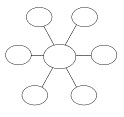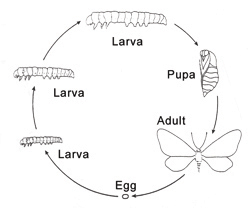Welcome my 5th grade scientist. We are going to learn all about Complete and Incomplete Metamorphosis.
Objective:
Given a blog on metamorphosis, that includes vocabulary, video link, and pictures of the different phases of metamorphosis, students will be able to accurately tell the difference between complete and incomplete metamorphosis.
Given a blog on metamorphosis, that includes vocabulary, video link, and pictures of the different phases of metamorphosis, students will be able to accurately tell the difference between complete and incomplete metamorphosis.
§112.16. Science, Grade 5, Beginning with School Year 2010-2011.
(10) Organisms and environments. The student knows that organisms undergo similar life processes and have structures that help them survive within their environments. The student is expected to:
(C) describe the differences between complete and incomplete metamorphosis of insects.
SLO: The learner will be able to identify and label the different stages of incomplete and complete metamorphosis
Focus:
Focus:
What is metamorphosis? Have you heard this word before? Some of you might remember in 4th grade you explored, illustrated and compared the life cycles in living organisms such as butterflies and beetles. Do you recall that these insects went through different stages as they grew?
In your science journal, I would like you to construct a think map of what you already know about metamorphosis. If you do not know what metamorphosis is, make a prediction.

Our journey in discovering more about metamorphosis will start by watching a short video. Before you click the link for the video read the "Important Vocabulary terms".
Video link: What is Metamorphosis?
Important Vocabulary Terms:
- Metamorphosis
- Complete Metamorphosis
- Incomplete Metamorphosis
- Egg
- Larva
- Pupa
- Nymph
- Shed
- Grow
- Exoskeleton
- Shed
- Change
- Hatch
Instructional Delivery:
We are now going to look at the two types of metamorphosis. While we are exploring these two types of metamorphosis, I want you think about how they are alike and how they are different. Please jot down your thoughts in your science journals.
Metamorphosis refers to the way certain organisms develop, grow, and change form. Metamorphosis actually means “change”. There are two types of metamorphosis, complete and incomplete. Complete metamorphosis has four stages and incomplete metamorphosis has three stages.
Complete Metamorphosis
We have learned that complete metamorphosis has four stages. They are egg, larva, pupa, and adult.
 (http://extension.entm.purdue.edu/401Book/default.php?page=insect_development)
(http://extension.entm.purdue.edu/401Book/default.php?page=insect_development)Click here: Animated Life Cycle of Butterfly
Stage 1: Egg
- The female lays eggs.
Stage 2: Larva
- Larva hatch from the eggs but does not look like adult insects.
- They have a worm-like shape.
- The larvae molt their skin several times, growing slightly larger.
Stage 3: Pupa
- Larvas make cocoons around themselves.
- Larvas do not eat while they are inside their cocoons.
- Bodies develop into an adult shape with wings, legs internal organs, etc.
- Takes anywhere from 4 days to several months.
Stage 4: Adult
- Inside the cocoon, the larvae change into adults.
- After a period of time, the adult breaks out of the cocoon.
In your science journal, draw and label the four stages of the complete metamorphosis for a butterfly.
Incomplete Metamorphosis
We have learned that incomplete metamorphosis has three stages. They are egg, nymph, and adult.

(http://extension.entm.purdue.edu/401Book/default.php?page=insect_development)
Stage 1: Egg
- Female insect lays eggs.
- These eggs are often covered by an egg case, which protects the eggs and holds them together.
Stage 2: Nymph
- Eggs hatch into nymphs.
- Looks like small adults without wings
- Eat the same food as adult insect eats.
- Shed or molt their exoskeletons (out casings made up of hard substance called chitin) and replace them with larger ones several times, as they grow.
- Molt 4-8 times.
Stage 3: Adult
- Stops molting when they reach adult size.
- Grow wings.
Guided Practice:
In your science journal, draw and label the four stages of the incomplete metamorphosis for a butterfly.
Complete Metamorphosis
In your science journal, draw and label the three stages of the incomplete metamorphosis for a grasshopper.
Incomplete Metamorphosis
Independent Practice:
You are now very knowledgeable about complete and incomplete metamorphosis, and know there are different stages. You also know what those stages look like. To show what you know, I would like you to construct a Venn diagram comparing complete and incomplete metamorphosis. Please make sure you include vocabulary terms and the name and number of stages of metamorphoses.
Comparing the two types of metamorphosis

Closure:
In your science journal write down the title of any books you have read that the character underwent metamorphosis? Did the character under go complete or incomplete metamorphosis.
References
- TEA Website
- Blank Venn Diagram
- Complete and Incomplete Insect Cycles
- What is Metamorphosis?
- Animated Life Cycle of a Grasshopper
- Animated Life Cycle of Butterfly
- Metamorphosis Information
- Think Map
You can draw Venn diagrams with Creately Venn diagram maker. Creately consist of Venn diagram worksheets to draw with templates and examples.
ReplyDelete